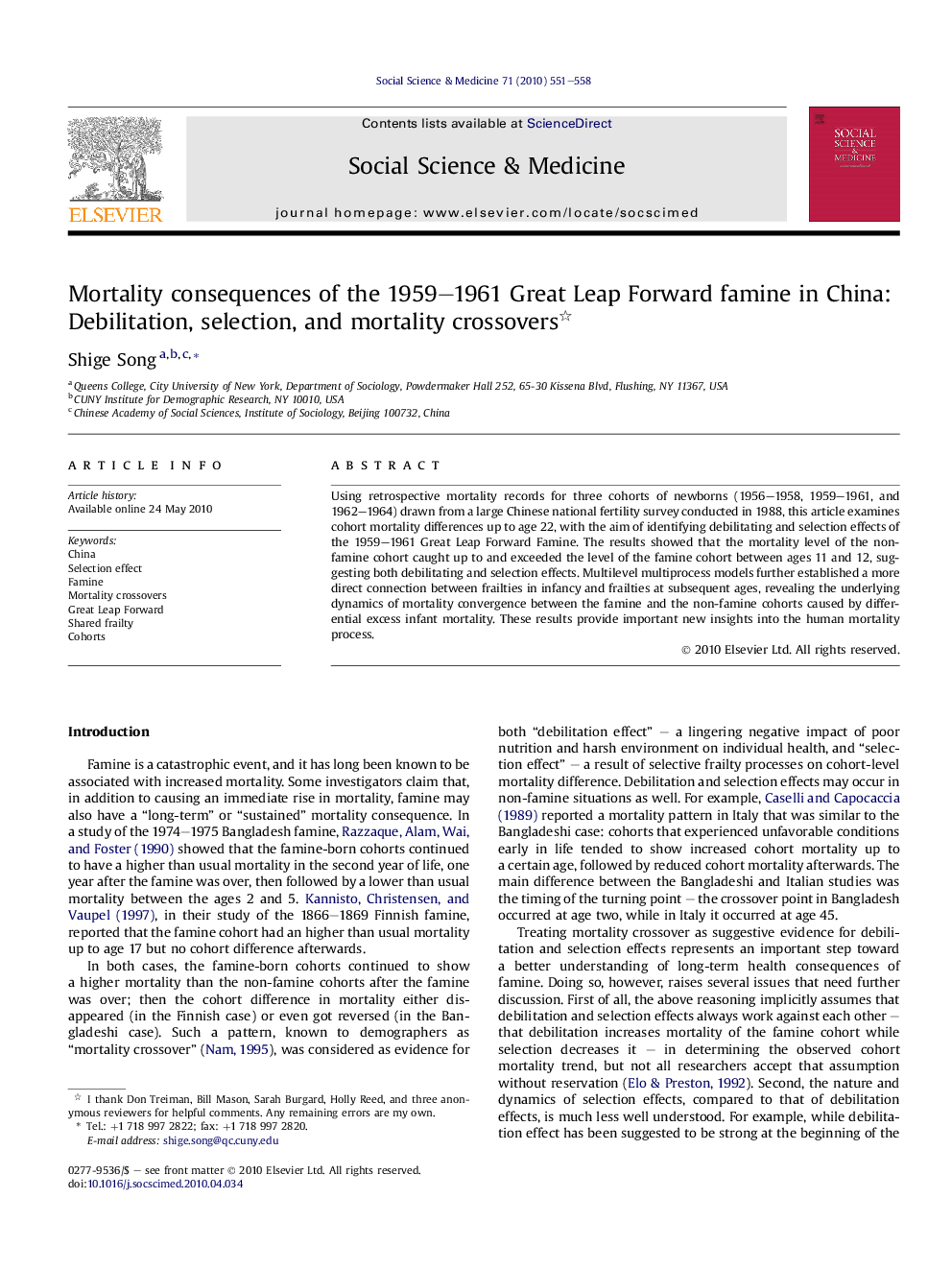| Article ID | Journal | Published Year | Pages | File Type |
|---|---|---|---|---|
| 953088 | Social Science & Medicine | 2010 | 8 Pages |
Using retrospective mortality records for three cohorts of newborns (1956–1958, 1959–1961, and 1962–1964) drawn from a large Chinese national fertility survey conducted in 1988, this article examines cohort mortality differences up to age 22, with the aim of identifying debilitating and selection effects of the 1959–1961 Great Leap Forward Famine. The results showed that the mortality level of the non-famine cohort caught up to and exceeded the level of the famine cohort between ages 11 and 12, suggesting both debilitating and selection effects. Multilevel multiprocess models further established a more direct connection between frailties in infancy and frailties at subsequent ages, revealing the underlying dynamics of mortality convergence between the famine and the non-famine cohorts caused by differential excess infant mortality. These results provide important new insights into the human mortality process.
